The Athabaskan Indians were hunters and inland fisherman. They traveled for days without food and existed in temperatures of -45°C (-50°F) or less without shelter or fire. Some Athabaskan groups inhabited permanent winter villages and summer fishing camps.
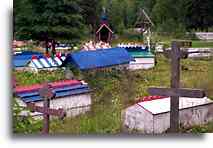
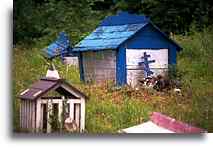
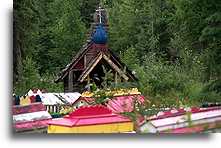
The Russians came to Alaska in the early 1800's. They converted Athabaskan Indians to Russian Orthodox religion. Many of the religious practices of natives and the Russians blended. One of the most interesting are spirit houses found in the Eklutna Cemetery. They contain personal items to help the spirit in the next life. Each family uses specific colors for their spirit house to identify their clan. There are no written names. The three-bar Orthodox cross placed in the foot of the grave identifies members of the Russian Orthodox Church.
Pacific Coast Indians (groups identified today as the Tlingts and Haidas) had a great respect for the natural world. Every hunted animal was treated with honor. For example, they always returned all bones to the river where salmon was caught.
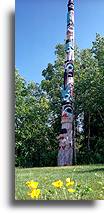
The totem poles carved by Coastal Indians trace the history of individual native families and clans. They are like a family crest or family tree. Each figure on the pole is a symbol of a family characteristic, an event, or a totem - a power of nature to which the family has a special relation. From the many portrayed figures, Thunderbird is the most powerful spirit. It perches at the highest point.
The ideal tree for carving is a western red cedar that grows close to the sea or a river, so it is easy to transport. Unfortunately, cedar posts rot after about 65 years, so few old poles remain standing.
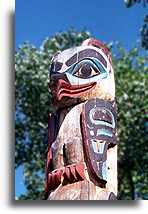
The Inupiaq (Eskimos) settled in Arctic region. Their village sites were chosen for availability of food sources like seal, walrus, whale and polar bear. The Inupiaq people have not had a written system for centuries. The only way to pass knowledge from one generation to another was through stories and songs. Their culture was different that European. The clan owned objects - for example, the right to perform a certain dance. The land on the other hand was common.

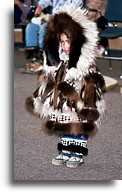
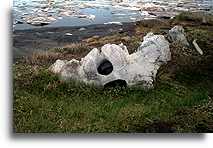
Skin whaling boats called umiak are still used for hunting sea animals in spring. The one shown on a picture is covered with walrus skin. Whaling is now very strictly regulated, but fathers in Inupiaq families teach their sons the secrets of harpooning. The Inupiaq language is spoken from northeastern Siberia to Greenland. It is one of the most complex and difficult languages in the world. Through the history there has not been even one European trader or explorer, who could speak Inupiaq language fluently.




